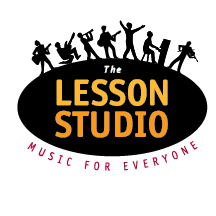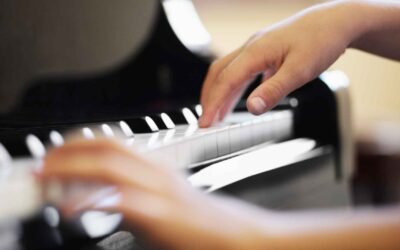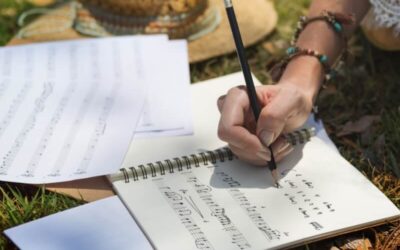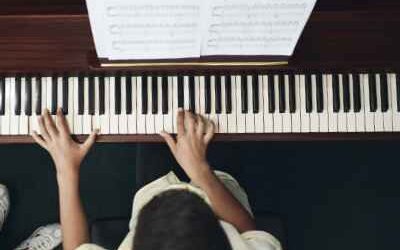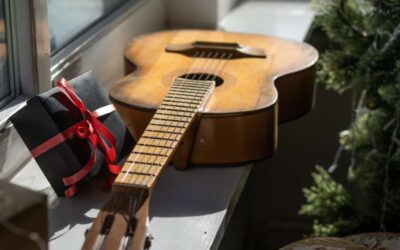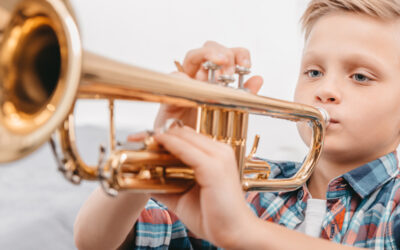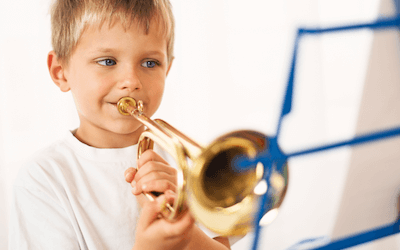Introduction
When I first started learning to master the piano, I had this one-track mind. I thought the only way to truly “play” the piano was by mastering sheet music. My teacher would hand me a new piece, and I’d spend hours deciphering each note, each rhythm, determined to get it perfect. But there was this little voice in the back of my head every time I’d watch a friend sit down at a piano, listen to a song once, and then just start playing. No sheet music, no hesitation—just pure music. It made me wonder: was there something I was missing?
It turns out, there was. To become a well-rounded pianist, it’s essential to master both ear training and sight-reading. These two skills complement each other and, when combined, can take your playing to a whole new level. Let’s dive into why you need both and how you can start incorporating them into your practice.
What is Ear Training?
Ear training is all about developing your ability to recognize and reproduce music just by listening. Think of it as sharpening your musical intuition. Instead of relying on a sheet of paper to tell you what notes to play, ear training lets you hear a melody, chord, or rhythm and then figure it out on the piano.
The Magic of Ear Training
When you work on ear training, you’re improving several key skills:
- Interval recognition: This is about understanding the distance between two notes. For example, hearing the notes C and E and recognizing that they’re a major third apart.
- Chord identification: This skill helps you recognize chords by their sound. Can you tell a major chord from a minor one just by listening? How about a diminished chord?
- Melodic dictation: This involves listening to a melody and then figuring out how to play it on your piano.
- Rhythmic dictation: Here, you focus on reproducing rhythms by ear, which is crucial when you’re trying to match the groove of a song.
Ear training has so many benefits. It’s the key to improvisation, helping you come up with your own melodies and chord progressions on the spot. It also enhances your musical memory, making it easier to remember songs after just hearing them once or twice. And perhaps most importantly, ear training gives you the freedom to play without sheet music, which opens up a whole world of possibilities.
What is Sight-Reading?
On the other side of the spectrum is sight-reading. This is the skill of playing a piece of music accurately just by looking at the notation. It’s the bridge that connects what’s on the page to what comes out of the piano.
The Power of Sight-Reading
Sight-reading involves several important skills:
- Reading musical notation: You need to understand the symbols on the sheet music—notes, rests, dynamics, etc.—and translate them into sound.
- Hand-eye coordination: Sight-reading demands that your eyes and hands work together seamlessly. Your eyes scan the music, and your hands follow, sometimes moving in complex patterns.
- Quick comprehension: This is about processing rhythm and pitch almost instantaneously so that you can keep up with the music without hesitation.
The benefits of sight-reading are massive. It allows you to play a wide variety of music, from classical to contemporary, without needing weeks of practice. You can join in with other musicians more easily, and it strengthens your technical skills, making your playing more precise and versatile.
The Synergy of Ear Training and Sight-Reading
At first glance, ear training and sight-reading might seem like polar opposites. One relies on your ability to listen and reproduce, while the other depends on your ability to read and interpret. But here’s the thing—they actually work together beautifully.
How Ear Training Enhances Sight-Reading
When you’ve trained your ear, you start recognizing patterns and pitches more quickly, even when reading sheet music. For example, if you’re sight-reading and come across a tricky interval, your ear training will help you anticipate what it should sound like, making it easier to play.
How Sight-Reading Supports Ear Training
Conversely, being a good sight-reader reinforces your ear training. The more you read music, the more you understand musical structure, scales, and chord progressions, which in turn makes it easier to play by ear. You’ll start recognizing common patterns in the music you hear, making it simpler to figure out how to play them.
Let me give you a personal example. There was a time when I relied almost entirely on sheet music. I’d get nervous whenever someone asked me to play something by ear. But as I started working on my ear training, I noticed that my sight-reading improved as well. I could sight-read more fluently because I wasn’t just following the notes mechanically—I could hear the music in my head as I played. It made me a more confident and expressive pianist.
Practical Tips for Balancing Ear Training and Sight-Reading Practice
So, how do you incorporate both ear training and sight-reading into your practice? It might seem overwhelming at first, but with a little organization, you can strike a balance that works for you.
Create a Balanced Practice Routine
The key is to dedicate specific time each day to both skills. For instance, you might start your practice session with 15 minutes of ear training—using apps like Perfect Ear to work on intervals or melodic dictation. Then, move on to 15 minutes of sight-reading, perhaps tackling a new piece each day to keep your skills sharp.
Incorporate Both Methods into Learning New Pieces
When you’re learning a new piece, try playing it by ear first. Even if you have the sheet music, challenge yourself to figure out the melody and harmony by listening to a recording. Once you’ve done that, use the sheet music to refine your interpretation and ensure you’re playing it accurately. This approach not only reinforces both skills but also deepens your understanding of the music.
Use Resources to Support Your Practice
There are tons of resources available to help you improve both your ear training and sight-reading. For ear training, consider using apps or online courses that offer structured exercises. For sight-reading, method books and sight-reading apps can be incredibly helpful. Don’t forget to set specific goals, like being able to sight-read a new piece with fewer mistakes or being able to transcribe a melody by ear within a certain timeframe.
Overcoming Common Challenges
Challenges in Ear Training
One of the biggest challenges in ear training is recognizing intervals and chords accurately. It can be frustrating when you’re not sure if you’re hearing a major third or a perfect fourth. My advice? Start simple. Begin with intervals that are easier to identify, like the perfect fifth, and gradually work your way up to more complex ones. Also, practice regularly—consistency is key.
Challenges in Sight-Reading
Sight-reading can be daunting, especially when you’re under pressure to play in real-time. If you find yourself struggling, slow down. Practice sight-reading at a slower tempo, focusing on accuracy rather than speed. Over time, you’ll find that your speed naturally improves as you become more familiar with the process.
Conclusion
Incorporating both ear training and sight-reading into your piano practice isn’t just a good idea—it’s essential if you want to become a versatile and skilled pianist. These skills complement each other, and together, they allow you to play with greater freedom, creativity, and confidence.
So, don’t limit yourself to just one method. Embrace the challenge of mastering both, and watch your piano playing reach new heights. Start today, and enjoy the incredible journey of becoming a well-rounded musician! Whether you’re figuring out a tune by ear or reading through a complex piece of sheet music, you’ll find that each skill enhances the other, making you a more complete and capable pianist.
If you would like to improve your piano skills or need help with ear training or sight-reading consider a private piano lesson.
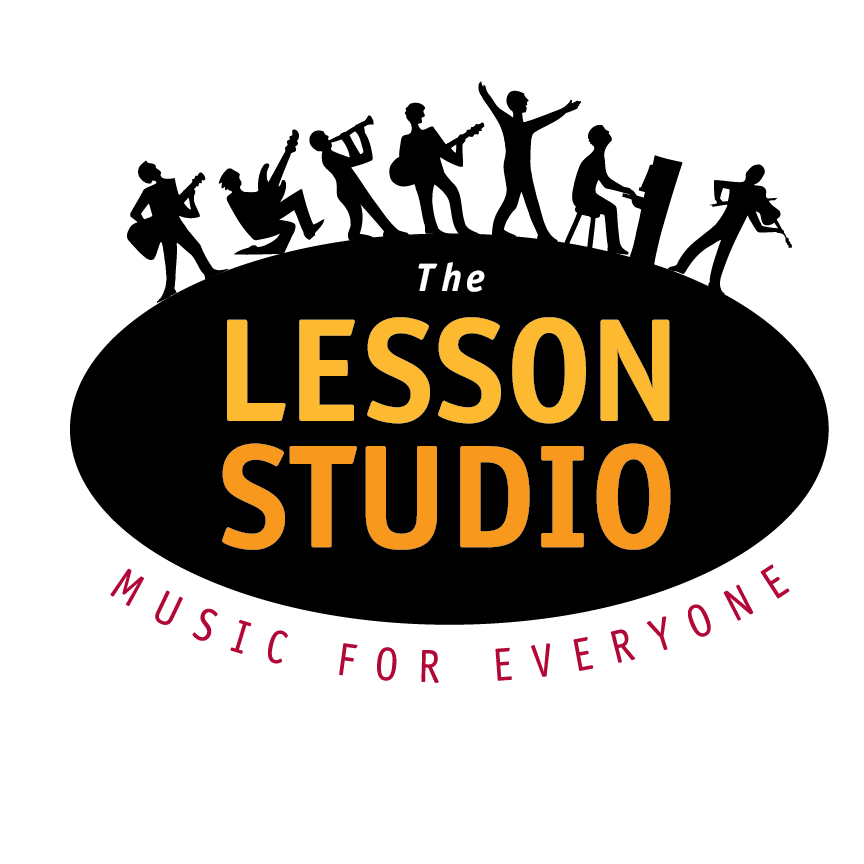
Don’t forget to share this post.
Feeling Nervous About Restarting Piano? It’s Easier Than You Think!
[pac_divi_table_of_contents included_headings="off|off|on|off|off|off"...
Write Your First Song in 10 Minutes. No Experience? No Problem!
[pac_divi_table_of_contents included_headings="off|off|on|off|off|off"...
Sing Higher Instantly! Mastering Head Voice & Falsetto in Boulder, CO
[pac_divi_table_of_contents included_headings="off|off|on|off|off|off"...
Learn to play these captivating pop ballads, even if you’re just beginning!
[pac_divi_table_of_contents included_headings="off|off|on|off|off|off"...
Why Music Lessons Are a Powerful New Year’s Resolution
[pac_divi_table_of_contents included_headings="off|off|on|off|off|off"...
Gifts that Will Make Kids Fall in Love with Music
[pac_divi_table_of_contents included_headings="off|off|on|off|off|off"...
Essential Tips for Parents of Young Brass Players: Support Your Budding Musician
[pac_divi_table_of_contents included_headings="off|off|on|off|off|off"...
How Learning Brass Instruments Helps Kids’ Cognitive, Physical and Social Growth
[pac_divi_table_of_contents included_headings="off|off|on|off|off|off"...
Top 5 Beginner-Friendly Guitar Techniques You’re Probably Not Using!
[pac_divi_table_of_contents included_headings="off|off|on|off|off|off"...
How to Start Voice Lessons: Essential Techniques for Beginning Singers
[pac_divi_table_of_contents included_headings="off|off|on|off|off|off"...
